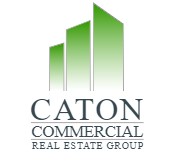Owners Can No Longer Afford To Sit Out The Proptech Revolution

The coronavirus pandemic has raised tenant expectations around technology, and commercial building owners who don’t meet them risk being left in the dust — or at least left with a portfolio of buildings that may not appeal to today's buyers or renters.
Today’s tenants want smart property technologies that allow them to do everything from turning on a light to unlocking a door from their phones. A recent study found more than 90% of proptech vendors expect Covid-19 will continue to drive the adoption of these technologies as people spend more time than ever inside their homes.
That finding is not surprising to Amy Hall, chief operating officer of Caton Commercial Real Estate Group, a commercial real estate brokerage and property management company with three offices in the Chicago metropolitan area. Hall said she knows property end users are eager to see more automation brought into their buildings even if the buildings’ owners can be a little behind the adoption curve.
“Why do building owners need to be concerned about proptech?” Hall said. “It’s because the consumer adopts technology far faster than how we as an industry have adopted it. And that creates a perception problem because the end user may feel your building is antiquated and not giving them what they feel they need. A property owner has to be able to meet those needs, whether it is from a retail, industrial or office perspective, or a multifamily dwelling.”
Hall pointed to a new mixed-use development in the Chicago suburb of Naperville that took client connectivity concerns into consideration. Central Park Place, an approximately 100K SF project that combines 17 luxury residential condo units with 17K SF of retail space, will be installing a particularly popular proptech feature — keyless entry — for its residents.
Proptech tools don’t just help make life easier for residents while they are home. They also provide an added layer of security while giving residents the ability to grant people access to their home while they’re away, from visiting guests to housekeepers or dog walkers.
A concern about security, according to Caton Property Management Managing Director Barbara Montes, is one of the top three reasons buildings are adopting proptech.
“The building’s residents want to be able to control who goes in and out, which they will be able to do with keyless locks,” she said. “They could be miles away in a different state and still share a code to grant access.”
Younger consumers often are credited for driving technology adoption, but Montes said proptech’s appeal is much broader.
“Proptech has been a cultural phenomenon with all age groups,” she said. “I think at this point, people just want to know what's going on at home even when they're away. They are just used to having information at their fingertips.”
The other main drivers of proptech adoption are energy efficiency and preventive maintenance.
Montes said building owners appreciate energy-saving features that allow them to operate their properties more efficiently. One example is pre-programmed photosensitive lighting around a building’s exterior that automatically adjusts to daylight saving time. If an unscheduled adjustment does need to be made, it can be done remotely from a laptop or smartphone, rather than requiring maintenance people to be sent out to fix the timers manually.
Proptech also offers advantages in building maintenance. Property managers can monitor the state of the building’s mechanicals via a dashboard display on a desktop or smartphone that alerts them when something is not operating properly.
In light of the pandemic and the need for social distancing, more property managers are considering smart elevator technology for their high-rise buildings, Montes noted. The technology groups tenants by desired floor destination and designates which elevators the tenants should use. This proptech prevents elevators from filling up and from stopping on all floors.
Through the use of tenant and client portals, such as those Caton utilizes to serve its clients, proptech also can make it easier for a building manager to process rent payments and communicate with residents. That's not a small consideration in this era of social distancing, Montes said.
Caton acts as a consultant to help its clients work their way up the proptech learning curve to meet consumer expectations.
“Our clients look at proptech now as an extension of how they do business because convenience is the new currency,” Hall said. “They’re trying to meet the client where they are, which is at the intersection of convenience and efficiency. And it also provides the cachet of having the latest and greatest technology in your building. All of that speaks to what consumers are demanding.”
Caton also works with clients to help them understand proptech is not the exclusive domain of high-rise buildings in major cities. Central Park Place, which is a neighbor to other low-rise buildings, including a historic library slated to be repurposed to operate as a restaurant, is a modest four stories tall.
“They might make assumptions around what proptech costs and the automatic thought is that it's very expensive,” Hall said. “Some of it is, but some of it is actually quite reasonable. You just have to do the research and you have to understand what is actually needed versus what is wanted. There are entry-level platforms that you can introduce to a building that you can build on over time.”
This article was produced in collaboration between Caton Commercial Real Estate Group and Studio B. Bisnow news staff was not involved in the production of this content.
Studio B is Bisnow’s in-house content and design studio. To learn more about how Studio B can help your team, reach out to studio@bisnow.com.

